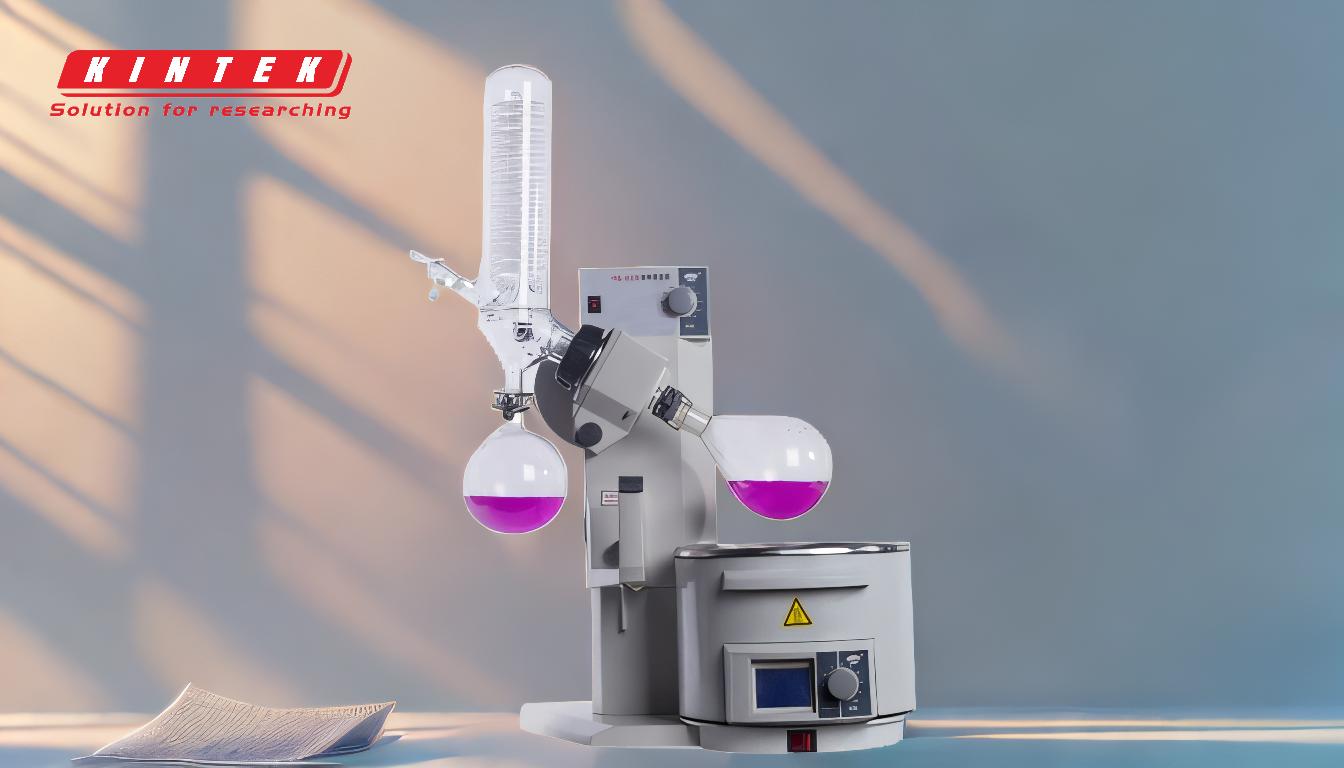When selecting a flask for use with a rotary evaporator, it is essential to consider the flask's volume, compatibility with the evaporator, and the type of rotary evaporator being used. The flask should hold approximately twice the starting volume of the sample to ensure proper evaporation and prevent overflow. Standard flasks typically have a No. 24 interface, with common sizes being 500ml and 1000ml. Additionally, the solution volume should not exceed 50% of the flask's capacity. There are two main types of rotary evaporators: vertical for small sample volumes and horizontal for large volumes, each requiring appropriately sized flasks.
Key Points Explained:

-
Flask Volume and Capacity:
- It is recommended to select a flask that can hold about twice the starting volume of the sample. This ensures proper evaporation and prevents overflow.
- The amount of solution in the flask should generally not exceed 50% of the flask's capacity. This helps in maintaining efficient evaporation and reduces the risk of bumping.
-
Standard Interface:
- The flasks used in rotary evaporators typically have a standard interface No. 24. This standardization ensures compatibility across different models and brands of rotary evaporators.
- Common flask sizes provided are 500ml and 1000ml, which are suitable for a wide range of laboratory applications.
-
Types of Rotary Evaporators:
- Vertical Rotary Evaporators: Commonly used in chemistry and research labs for small sample volumes. These evaporators are ideal for precise and controlled evaporation processes.
- Horizontal Rotary Evaporators: Used in large industries such as chemical, pharmaceutical, and food industries for large sample volumes. These evaporators are designed to handle larger quantities efficiently.
-
Bump Trap Usage:
- Using a bump trap is highly recommended to prevent the sample from splashing into the condenser during the evaporation process. This is particularly important to avoid the need to recover the sample from the condenser and solvent trap if bumping occurs.
- The volume of the bump trap is generally irrelevant if proper caution is exercised, but its presence is crucial for maintaining the integrity of the sample and the efficiency of the evaporation process.
-
Practical Considerations:
- When selecting a flask, always consider the specific requirements of your experiment or process. Ensure that the flask size and type are appropriate for the volume of the sample and the type of rotary evaporator being used.
- Regularly check the condition of the flask and the bump trap to ensure they are functioning correctly and are free from any defects that could compromise the evaporation process.
By following these guidelines, you can ensure that the flask you choose for your rotary evaporator will be suitable for your specific needs, providing efficient and safe evaporation of your samples.
Summary Table:
| Factor | Guidelines |
|---|---|
| Flask Volume | Choose a flask that holds twice the sample volume to prevent overflow. |
| Solution Capacity | Do not exceed 50% of the flask's capacity to maintain efficient evaporation. |
| Standard Interface | Use No. 24 interface flasks (e.g., 500ml or 1000ml) for compatibility. |
| Evaporator Type | Vertical for small volumes; horizontal for large volumes. |
| Bump Trap | Always use a bump trap to prevent sample splashing and ensure safety. |
Need help selecting the right flask for your rotary evaporator? Contact our experts today for personalized advice!










